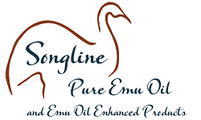Emu Oil For Poison Ivy
I love being outdoors. Camping, fishing, hiking, berry picking, you name it and I'm there. As a child, I could roll in poison ivy and not have a reaction. But as I hit 60, and have had multiple exposures to the plant, my skin now reacts to just the smallest exposure. I'm not alone; nearly 90% of the population is allergic to poison ivy.
Evidence also reveals that climate change and increased carbon dioxide levels are producing more virulent plants with larger leaves and higher levels of the compound urushiol (you-ROO-shee-all). This compound is found not only in poison ivy but also poison oak and sumac.
There are three ways to be exposed to urushiol:
- Direct contact with the sap
- Indirect contact such as touching a pet, garden tools or clothing that has come in contact with the sap
- Exposure to smoke from a fire burning one of these poison plants
Urushiol begins to penetrate the skin within minutes, and rashes form within 12 to 48 hours. Within a few days the blisters will crust over; then it usually takes 10 or more days for the skin to heal. If you think you have been exposed to one of these poisonous plants, follow these simple steps:
- Wash your skin right away to remove the plant oil. You need to break it down so try a grease-fighting dish-soap, many people also swear by Napha Laundry Soap. If the oil is not washed off it can spread from person to person and to other areas of your body. Rubbing alcohol can also help remove the oil.
- Wash your clothing and everything that may have come in contact including gardening tools, golf clubs, fishing gear or pet fur.
- If you do develop a rash; do not scratch, as scratching can cause a secondary infection. Leave blisters alone.
Only when you are certain you have removed all plant oil from your skin you can apply Pure Emu Oil. This is critical because Emu Oil is so highly penetrating it could carry urushiol into the skin and spread it systemically. However, once all plant oil is removed you will find that Emu Oil will soothe the itch quickly, speed healing and reduce scarring. I tend to wait until the next day to start using it.
Apply Emu Oil several times a day as needed to reduce itching.
Additionally, lukewarm baths in a colloidal oatmeal preparation or baking soda will help as well as cool showers or cold compresses.
If you have a really severe case consider taking antihistamine pills. These pills can help reduce itching, however, use with caution. I've also found the homeopathic remedy Rhus Tox very helpful. It reduces the length of the rash and even seems to increase my resistance to future exposure.
When to see a doctor:
- The reaction is severe or widespread
- You inhaled the smoke from burning poison ivy and are having difficulty breathing
- Your skin continues to swell
- The rash affects your eyes, mouth or genitals
- Blisters are oozing pus (secondary infection)
- You develop a fever greater than 100 F (37.8 C)
- The rash doesn't get better after 7 to 10 days
More Reading:
Mayo Clinic - Poison Ivy Symptoms and Causes
American Academy Dermatologists - Poison Ivy Oak and Sumac Tips
New York Times - What Climate Change Looks Like For Poison Ivy
